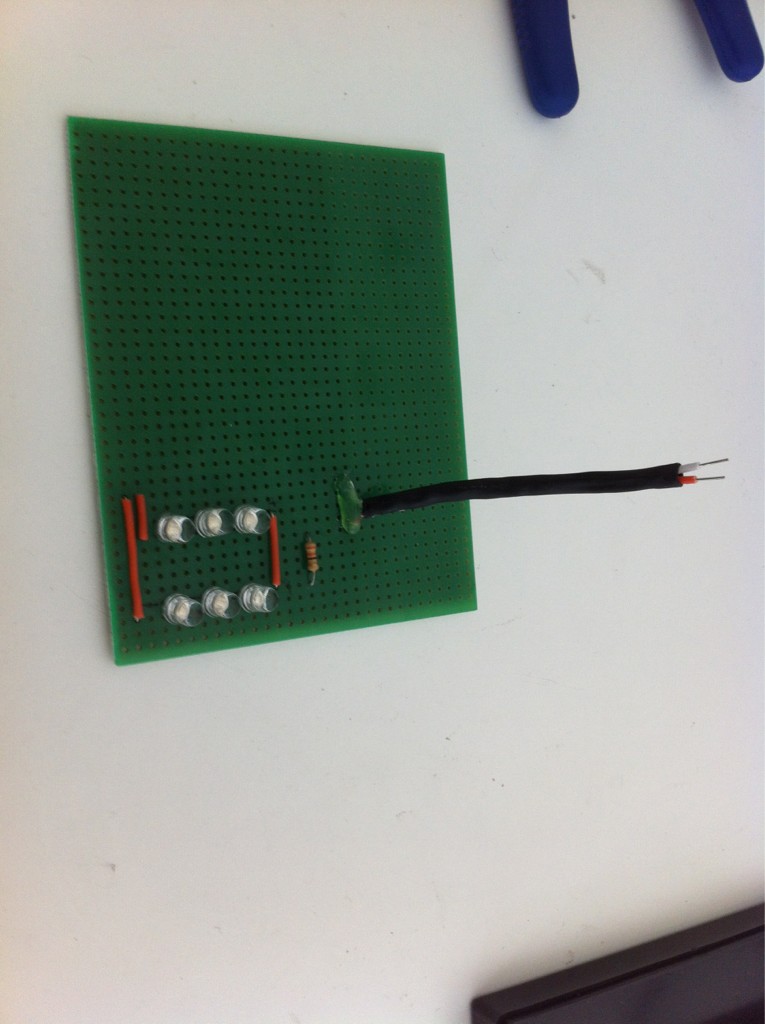I have 6x UV-leds in parallel driven by a 6V source. The problem I have is that they glow for a little while, then they are completely off for a little while, then glows and then they are off completely. They all do this simulatneously. My question is what could cause such a behaviour?
What I have done so far
I have very limited knowledge in electronics, but these are my thoughts so far:
Possible problem #1: I read in another question that LEDs are "current oriented" instead of being "voltage oriented" and that there needs to be a circuit controlling the current. Due to the fact that my circuit does not take this account in at all, this could be the problem. If that was the problem, wouldn't the circuit behave in another way?
Possible problem #2: Since the circuit behaves like someone is turning on and off a lightswitch and then leaving it off, I thought about that there was a loose component or two components touching each other creating a short. But I have checked the solders closely and there seems to be no problem with them. (I was very thorough when soldering. I used flux and made sure each solder had good contact with the board.)
Possible problem #3: The LEDs are rated for 3.3 V @ 20 mA, maybe since I'm supplying 6 V with a 330 Ohm resistor resulting in 18 mA they behave this way? I thought as long as the current was close to 20mA they would be fine.
Possible problem #4: I have an error in the layout of my circuit.
Background
Here is the schematics and information about the components:
- B1 = 6 V
- R1 = 330 Ohm
- LED1 = 3.3 V @ 20 mA
When testing the circuit I used a DC power supply with voltages 3.3, 5 and 6 with the same behavior.

Image of the circuit after soldering:


